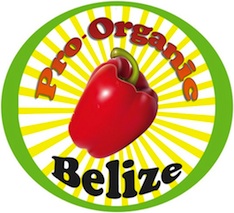Tropical Garden Grow Guide
Where you are the student and the teacher
Plant
of the month May 2024
Watermelon

| Botanic name: | Citrullus lanatus |
| Plant Type |
Annual Flowering
Vine |
| Family |
Curubitaceae |
| Sun Exposure |
6 hours full sun |
| Soil Ph |
6.0-6.5 |
| Soil Preference |
well drained, loamy |
Cool, refreshing
watermelon on a hot day helps restore
hydration while providing vitamins and
antioxidants.
Watermelon is technically classified as a
berry with a hard rind. The
origin of
watermelon cultivation has been traced to tropical
North Africa.
Seeds and early Egyptian art trace the
domestication of this fruit back to 6,000 years
ago.
The earliest
grown watermelons were not the sweet varieties
we know today.
They were grown as a
source of water and food for humans and farm
animals. Today,
over 1,000 varieties are grown in
tropical to temperate countries world-wide.
China grows at least 2/3 of the world's
total watermelon production.
Watermelon is an
annual flowering vine plant species of
the Curubitaceae family that produces melons with
a green or yellow rind with
red, pink, orange, yellow green or white flesh.
Red is the most common.
How to grow: Watermelons
are relatively easy to
grow. Seeds
may be harvested from
watermelons, rinsed and dried. The indigenous
varieties grow well from native
seeds. Work
the soil to at least 10
inches deep and 12 inches around; add compost,
worm castings and well-rotted
manure as helpful additions to get the seeds off
to a healthy start.
For each planting of 5-6 seeds make mounds
about 6' distant from one another with each mound
about 10 inches high and 10
inches across.
Plant the seeds about ½ -
1” deep and cover with soil. Sprinkle
or
spray each mound until the soil is drenched.
Be sure to water every day. Seeds
generally germinate in about 4-12 days. Thin the
seedlings to two of the
heartiest to be 4” - 6” apart. Keep watering daily
when there is no rain, but
do not allow the soil to get soggy and do not
water the leaves as they are
susceptible to mildew. Be forewarned if plants are
stressed by lack of water
they may not set fruits. It is recommended to
allow the top 1”- 2”of soil to
dry out between waterings once the plants are
established.
Be sure to mark each hill with a stake as
once the plants are up and growing it is next to
impossible to find the
original mounds.
You may have to hand
pollinate the pale yellow flowers if no bees are
around to do the job. A paint
brush or a cotton swab can be used to transfer the
blossoms with pollen to
those without. It takes approximately 100 days for
watermelons to be ready to
harvest.
How to
harvest: When
the
watermelon rind goes from shiny to a duller
finish, the bottom of the melon
turns from green to a yellowish tinge and the vine
looks withered, it is
harvest time.
Cut the cord from the vine
to the fruit and store the watermelon in a cool
location.
Disease and
insect control:
Watermelons are susceptible to
aphids,
fruit flies, root knot, nematodes, powdery mildew
and mosaic virus.
Below are two easy-to-make generic
non-agro-chemical
recipes to the rescue!
Neem oil or
Neem tea spray:
½ ounce neem oil,
or 2 cups strong brewed neem tea
2 teaspoons mild
soap, like Bronner's or a liquid castile
soap
1 quart water
(use 2 cups water if you are using the neem
tea method; add 2 more cups to make 1 quart)
Mix ingredients
together, pour into a spray bottle, spray
plant leaves top and underneath in the early AM or
PM, not in the hot sun.
All-purpose
bug spray (especially good for controlling
aphids):
Chop one onion,
3-4 cloves of garlic, place in a blender,
fill with water, grind, allow the mixture to brew
for a day, then strain and
mix in 2 teaspoons of ground cayenne pepper.
Pour the strained mixture with cayenne
pepper into a gallon container,
fill with water then add 2 tablespoons liquid
castile soap, mix and spray on
affected plants. Spray in the early AM or PM, not
in the hot sun.
Health
benefits: Watermelons
contain
91% water and up to 9% sugars and pulp.
There are 46 calories per cup. The flesh
contains electrolytes and
potassium and is high in magnesium and lycopene.
Watermelons are high in
vitamins A, B6 and C. Eating
watermelon
along with some of the rind adds extra fiber.
The seeds are rich in magnesium and
selenium and contain protein,
calcium, iron, zinc, phosphorus along with
vitamins B1, B2 and E.
Recipes: Watermelon
is
enjoyed as a refreshing snack or dessert eaten out
of hand. There
are many recipes for beverages, pickles
and salads to be found on-line. The seeds raw and
roasted can be made into a
healthy snack. Here is a recipe for a delicious watermelon
gazpacho.
4 cups diced
watermelon
3 large roma
tomatoes diced
1 small red,
orange or yellow pepper diced
about ½ cup
finely diced red onion
1 finely minced
garlic clove
2 tablespoons
lemon, lime or orange juice
1 small cucumber
finely diced
¼ – ½ teaspoon
salt to taste
¼ teaspoon red
pepper flakes (optional)
1 tablespoon
honey
Mix all
ingredients together, then mash with a potato
masher, or add to a food processor with an S blade
and blend lightly.
Allow to cool in
refrigerator for a few hours to blend and
chill, then serve with a sprig of cilantro, finely
diced chives or chopped
basil and a few cranks of black peppercorns.
Enjoy!
